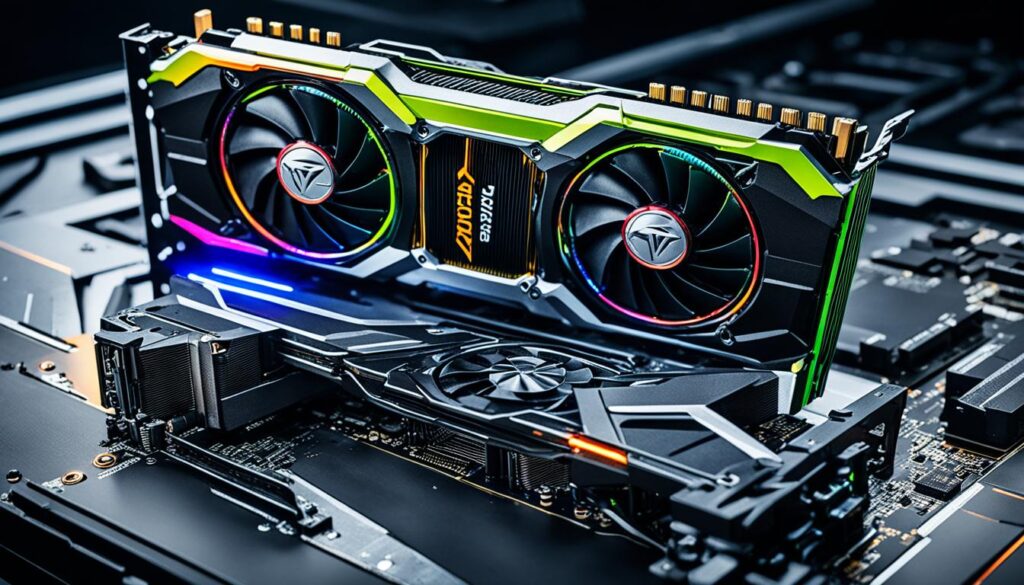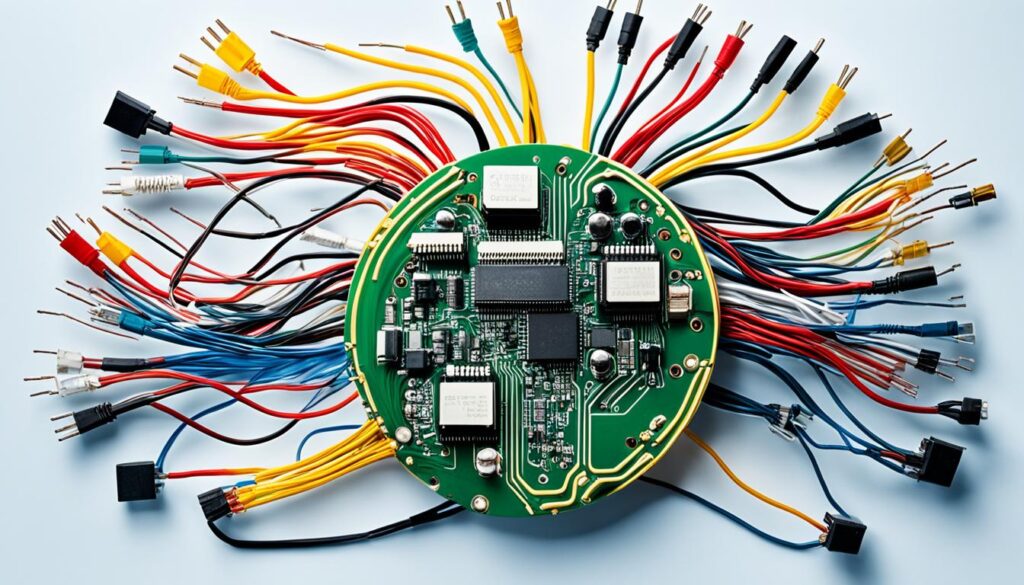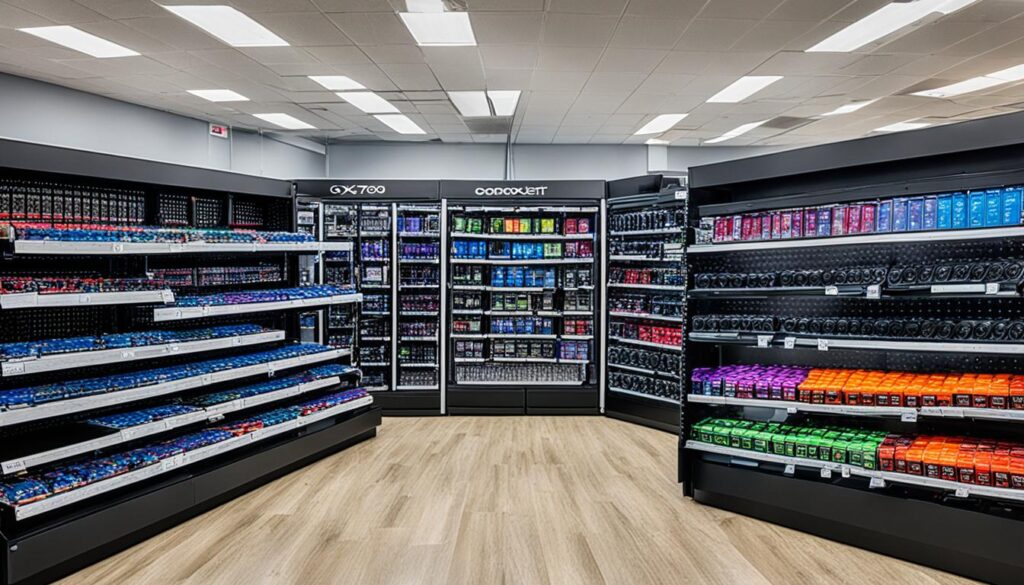Welcome to our comprehensive comparison between the AMD Radeon RX 7900 XT and the NVIDIA GeForce RTX 4070 Ti Super. As gaming enthusiasts, we understand the excitement surrounding these high-performance graphics cards. In this article, we will delve into the specifications, analyze benchmark results, and discuss the price differences to determine the best GPU for your gaming needs.
In Section 2, we will explore the graphics card specifications of the 7900 XT and 4070 Ti Super, focusing on key factors such as VRAM and performance. Then, in Section 3, we will evaluate the gaming performance of both GPUs, highlighting their strengths and weaknesses in terms of benchmark results, 4K Ultra HD, and ray tracing.
Section 4 will dive into the price comparison between the 7900 XT and the 4070 Ti Super, discussing the value for money offered by both GPUs. In Section 5, we will examine the longevity and future-proofing capabilities of these graphics cards, considering their VRAM capacity and potential limitations.
Furthermore, in Section 6, we will touch upon the brand reputation and market perception of AMD, Intel, and NVIDIA, helping you understand the broader context of your purchase decision. Section 7 will cover the memory compatibility and upgradability of the 7900 XT and 4070 Ti Super, providing insights for those considering future upgrades.
Section 8 will shed light on the market availability and demand for the RX 7900 XT, as well as the potential impact on its stock. Lastly, in Section 9, we will conclude our analysis, summarizing the key points and factors to consider when choosing the best GPU for gaming.
Stay tuned as we take you on this exciting journey of comparing the latest GPUs and finding the perfect one for your gaming setup.
Graphics Card Specifications
When comparing the Radeon RX 7900 XT and the RTX 4070 Ti Super, it’s crucial to examine their graphics card specifications, particularly the VRAM capacity. The RX 7900 XT boasts an impressive 20GB of VRAM, giving it a significant advantage over the RTX 4070 Ti Super, which offers only 12GB. This 8GB (66%) disparity in VRAM can have a substantial impact on gaming performance, allowing the RX 7900 XT to handle more demanding games and future technologies with ease.
It’s interesting to note that although the RTX 6800 XT has 16GB of VRAM, it is slower than the RTX 4070 Ti Super. This highlights the importance of considering not only VRAM capacity but also the overall performance of the GPU. Despite having lower VRAM, the RTX 4070 Ti Super manages to outperform the RX 6800 XT by 21%. This indicates that VRAM capacity alone isn’t the sole determining factor for performance; other specifications and optimizations play a role as well.
These graphics card specifications play a crucial role in determining both the current gaming performance and the future-proofing abilities of the GPUs. With increasing demands for higher VRAM in games and the advent of new technologies, having a more extensive VRAM capacity can provide an advantage and ensure a smoother gaming experience.
To get a better understanding of how these specifications translate into actual gaming performance, let’s delve into the benchmark results in the upcoming section.
Gaming Performance
When comparing the gaming performance of the RX 7900 XT and the RTX 4070 Ti Super, we analyzed benchmark results to assess their capabilities in different scenarios. In terms of pure raster 3D workloads, the RX 7900 XT outperforms the RTX 4070 Ti Super by approximately 1% at 4K Ultra HD and 2% at 1440p.
However, it’s important to note that when it comes to ray tracing, the RTX 4070 Ti Super takes the lead. It delivers an impressive 23% higher performance at 4K Ultra HD and 21% at 1440p compared to the RX 7900 XT. This demonstrates the strengths and weaknesses of each GPU in different gaming scenarios, with the RTX 4070 Ti Super excelling in ray tracing applications.

| Benchmark Results | RX 7900 XT | RTX 4070 Ti Super |
|---|---|---|
| 4K Ultra HD Performance | 1% better | 23% better |
| 1440p Performance | 2% better | 21% better |
We see that the RX 7900 XT offers a slight advantage in raster 3D workloads, providing smoother gameplay at high resolutions. However, the RTX 4070 Ti Super’s superior ray tracing performance makes it more suitable for gamers seeking immersive visual experiences.
By considering these benchmark results, gamers can make an informed decision based on their preferences and the type of gaming experience they prioritize – whether that be exceptional overall performance or a focus on advanced ray tracing capabilities.
Price Comparison
The price difference between the RX 7900 XT and the RTX 4070 Ti Super is a key factor to consider when choosing a graphics card.
The RX 7900 XT, with its exceptional value for money, is priced significantly lower than its competitor. Currently, a custom-design Sapphire card is available on Newegg for $699 after a coupon discount. This makes it $100 cheaper than the recently announced RTX 4070 Ti Super, representing a discount of 12.5%.
This price advantage allows gamers to invest wisely and get the most out of their budget. With similar gaming performance, the RX 7900 XT provides excellent value for money, making it an attractive choice for gamers looking to optimize their purchases.
Whether you’re a budget-conscious gamer or seeking high-performance without breaking the bank, the RX 7900 XT’s price difference is worth considering.
Price Comparison Table:
| Graphics Card | Price |
|---|---|
| RX 7900 XT | $699 |
| RTX 4070 Ti Super | $799 |
As shown in the table above, the RX 7900 XT is priced at $699, while the RTX 4070 Ti Super is priced at $799. This $100 price difference further highlights the value the RX 7900 XT offers to gamers.
When considering the price difference and the comparative gaming performance, the RX 7900 XT emerges as a strong contender, providing excellent value for money.
Longevity and Future-Proofing
When considering the longevity and future-proofing of a graphics card, the VRAM capacity plays a crucial role. In this regard, the RX 7900 XT has a clear advantage over the RTX 4070 Ti Super. With its substantial 20GB VRAM, the RX 7900 XT offers ample room for handling demanding games and emerging technologies for an extended period of time.
On the other hand, the RTX 4070 Ti Super’s lower VRAM capacity may put it at a disadvantage in future gaming titles that require higher VRAM. This limitation could potentially affect its overall performance and prevent it from keeping up with the evolving gaming landscape.

To illustrate this further, let’s take a look at a comparison of the VRAM capacities:
| Graphics Card | VRAM Capacity |
|---|---|
| RX 7900 XT | 20GB |
| RTX 4070 Ti Super | 12GB |
This table clearly demonstrates the substantial difference in VRAM capacity between the RX 7900 XT and the RTX 4070 Ti Super. The 20GB offered by the RX 7900 XT ensures that it is better equipped to handle the demands of future gaming, providing users with a longer period of optimal performance and an enhanced gaming experience.
Investing in a graphics card with higher VRAM capacity, such as the RX 7900 XT, is crucial for those looking to future-proof their gaming setup and avoid potential performance limitations in upcoming games.
By considering VRAM capacity and looking toward the future, gamers can make an informed decision when choosing between the RX 7900 XT and the RTX 4070 Ti Super, ensuring they have a GPU that will meet their gaming needs for years to come.
Brand Reputation and Market Perception
When it comes to brand reputation and market perception, both AMD and NVIDIA have made significant strides in the CPU and GPU market. However, it is important to note that Intel and NVIDIA still maintain a strong position and are perceived as reliable and reputable brands in the industry.
While the RX 7900 XT offers competitive performance and value for money, there are consumers who prefer the familiarity and perceived reliability of Intel and NVIDIA products. Market perception plays a crucial role in the purchasing decisions of many individuals, as the reputation of a brand can influence trust and confidence in its products.
AMD has made remarkable advancements with their latest GPUs, such as the RX 7900 XT, but changing market perceptions takes time. The established dominance of Intel and NVIDIA has created an environment where their brands are more commonly associated with cutting-edge technology and exceptional performance.
That being said, it’s important to consider that brand reputation and market perception are not solely determined by performance or specifications. Factors like marketing strategies, historical successes, and even personal preferences can influence how consumers perceive different brands.
“Market perception plays a crucial role in the purchasing decisions of many individuals, as the reputation of a brand can influence trust and confidence in its products.”
Ultimately, the choice between the RX 7900 XT and the RTX 4070 Ti Super goes beyond purely technical considerations. It involves personal preferences, individual needs, and overall market perception. By understanding the strengths and weaknesses of each brand and considering factors beyond sheer performance, consumers can make a more informed decision that aligns with their priorities and requirements.
Memory Compatibility and Upgradability
When it comes to memory compatibility and upgradability, the choice between the RX 7900 XT and the RTX 4070 Ti Super is an important consideration for gamers. The RX 7900 XT utilizes DDR4 memory, which ensures compatibility with existing systems and allows gamers to take advantage of their DDR4 RAM. This compatibility offers a seamless upgrade path for those who already have DDR4 memory installed in their gaming setups.
On the other hand, with the launch of the AM5 platform and the adoption of DDR5 memory, the RX 7900 XT may not provide the same level of upgradability as the RTX 4070 Ti Super, which supports DDR5. DDR5 memory offers several advantages over DDR4, including faster data transfer rates and increased bandwidth. For gamers looking to future-proof their gaming setups, the compatibility with DDR5 could be a crucial factor to consider.
It’s important to note that upgrading to DDR5 memory may require additional hardware changes, such as a compatible motherboard that supports DDR5. It’s recommended to research and confirm the compatibility of the chosen GPU and memory with other components before making any upgrade decisions.
Ultimately, the decision between the RX 7900 XT and the RTX 4070 Ti Super in terms of memory compatibility and upgradability depends on individual preferences and future-proofing considerations. Each GPU offers its own advantages and it’s essential to choose the option that aligns with your gaming needs and upgrade plans.

DDR4 vs DDR5: Key Differences
Before finalizing your decision, let’s take a closer look at the key differences between DDR4 and DDR5 memory:
| DDR4 | DDR5 |
|---|---|
| Slower data transfer rates | Faster data transfer rates |
| Lower bandwidth | Higher bandwidth |
| Limited future compatibility | Potential for enhanced future compatibility |
While DDR5 offers superior performance and potential for better future compatibility, DDR4 remains a reliable and widely used memory type. It’s crucial to assess your specific requirements and consider the implications of upgrading to DDR5, such as the availability of compatible hardware and the overall cost.
Market Availability and Demand
The RX 7900 XT and RTX 4070 Ti Super have garnered significant attention in the market, with gamers eagerly awaiting their release. However, when it comes to market availability, there is a noticeable difference between the two GPUs.
Currently, the RX 7900 XT is experiencing a surge in popularity and demand, resulting in quick sales and a depletion of stock. This high demand for the RX 7900 XT is reflected in its prices, which have reached new lows due to discounts offered by various retailers, including Newegg. Gamers who have been eyeing this GPU can take advantage of these discounted prices to secure a powerful gaming component.
While the high demand for the RX 7900 XT is promising for AMD, it’s important to note that availability may be limited during the initial rush. As a result, it is crucial to continuously monitor the market for restocks and additional availability to ensure you can get your hands on one when stock becomes available again.
Market Availability and Stock Comparison
| RX 7900 XT | RTX 4070 Ti Super | |
|---|---|---|
| Market Availability | High demand with limited availability | Expected availability without significant stock issues |
| Prices | Discounted prices due to high demand | Standard pricing |
Overall, the market availability and demand for the RX 7900 XT indicate its popularity among gamers. Despite potential stock limitations, taking advantage of discounted prices can be a wise move for those looking for a powerful GPU. However, it is important to keep an eye on the market and be patient for potential restocks to secure this in-demand graphics card.

Conclusion
After a thorough analysis of the RX 7900 XT and the RTX 4070 Ti Super, it is evident that both GPUs have their respective strengths and weaknesses. The RX 7900 XT impresses with its excellent value for money, higher VRAM capacity, and competitive gaming performance. On the other hand, the RTX 4070 Ti Super stands out with its exceptional ray tracing capabilities.
When it comes to choosing the best GPU for gaming, it ultimately depends on individual priorities and budget. If value for money and future-proofing are top considerations, the RX 7900 XT offers a compelling option. Its higher VRAM capacity ensures seamless performance in demanding games and upcoming technologies.
However, if ray tracing is a significant factor for you, the RTX 4070 Ti Super delivers outstanding performance in this area. With its advanced ray tracing technology, you can experience realistic lighting and reflections, pushing the boundaries of visual immersion.
In conclusion, the best GPU for gaming is a decision that hinges on personal preferences, requirements, and budget constraints. Whether you prioritize value for money, VRAM capacity, or ray tracing capabilities, both the RX 7900 XT and the RTX 4070 Ti Super offer compelling options for avid gamers seeking top-tier performance.